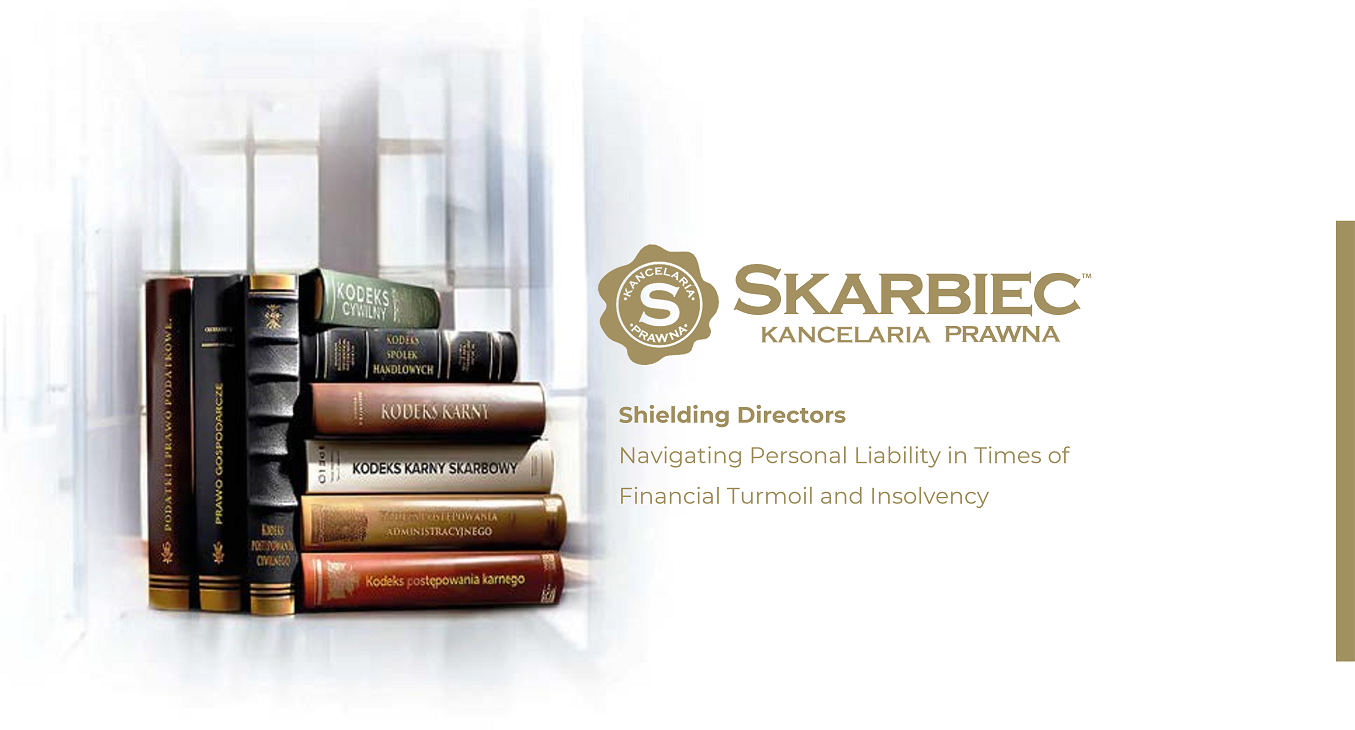
The legal underpinning for the subsidiary liability of directors regarding a company’s debts
Chapter 3
The legal underpinning for the subsidiary liability of directors regarding a company’s debts.
3.1 Civil responsibility for commercial debts
In accordance with Article 299 CCC, if enforcement against the company proves to be ineffective, the members of the management board are jointly and severally liable for its obligations. A member of the management board may be released from liability, as referred to above, if they can demonstrate that a bankruptcy petition was timely filed or a restructuring proceeding was opened at the same time or an arrangement was approved in the proceeding for approval of an arrangement, or that the failure to file a bankruptcy petition was not due to their fault, or that despite not filing a bankruptcy petition and not opening a restructuring proceeding or not approving an arrangement in the proceeding for approval of an arrangement, the creditor did not suffer any damage.
3.2 Financial responsibility of directors regarding unpaid taxes.
According to Article 116 § 1 of the Tax Ordinance, for tax arrears of a limited liability company, a limited liability company in organization, a simple joint-stock company, a simple joint-stock company in organization, a joint-stock company, or a joint-stock company in organization, the members of its management board are jointly and severally liable with their entire assets if enforcement from the company’s assets proves to be wholly or partially ineffective, and the member of the board:
1) has not demonstrated that:
a) a bankruptcy petition was timely filed or a restructuring proceeding was initiated in accordance with the Law on Restructuring of May 15, 2015, or an arrangement was approved in the proceeding for approval of an arrangement as provided in the Law on Restructuring, or
b) the failure to file a bankruptcy petition was not due to their fault;
2) does not identify the company’s assets from which enforcement would substantially satisfy the company’s tax arrears.
Article 299 CCC and Article 166 of Tax Ordinance serve as main basis for transferring financial claims from company to directors. Art. 116 of Tax Ordinance is not completely identical to the regulation contained in Art. 299 CCC, however, this does not change the fact that both provisions contain the same exemption condition, which is the timely submission of a bankruptcy petition. Furthermore, the determination of this circumstance must be made by referring to the provisions of the Bankruptcy and Reorganization Law, as neither art. 116 of the Tax Ordinance nor art. 299 of the Commercial Companies Code defines issues related to insolvency and the deadline for filing a bankruptcy petition.

Founder and Managing Partner of Skarbiec Law Firm, recognized by Dziennik Gazeta Prawna as one of the best tax advisory firms in Poland (2023, 2024). Legal advisor with 19 years of experience, serving Forbes-listed entrepreneurs and innovative start-ups. One of the most frequently quoted experts on commercial and tax law in the Polish media, regularly publishing in Rzeczpospolita, Gazeta Wyborcza, and Dziennik Gazeta Prawna. Author of the publication “AI Decoding Satoshi Nakamoto. Artificial Intelligence on the Trail of Bitcoin’s Creator” and co-author of the award-winning book “Bezpieczeństwo współczesnej firmy” (Security of a Modern Company). LinkedIn profile: 18 500 followers, 4 million views per year. Awards: 4-time winner of the European Medal, Golden Statuette of the Polish Business Leader, title of “International Tax Planning Law Firm of the Year in Poland.” He specializes in strategic legal consulting, tax planning, and crisis management for business.







